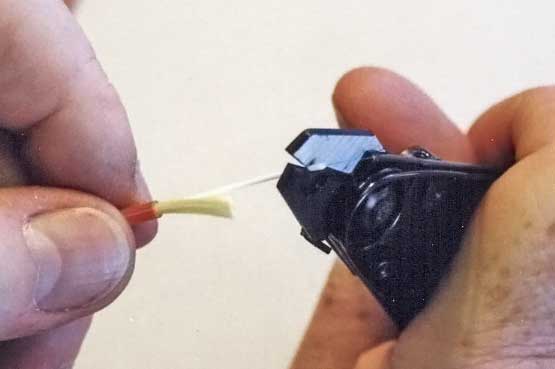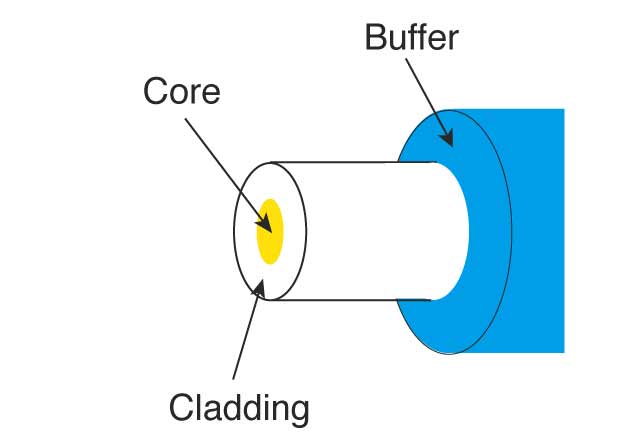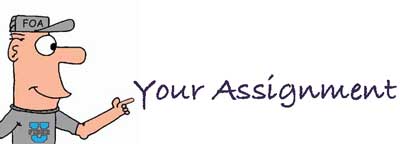Objectives:
From this lesson you should learn:
What is an FOA certified instructor expected to know about
fiber optics?
Where can additional technical information be found for
use in classes?
What kinds of technical questions will FOA ask instructors
on the exam?
What Is A FOA
Certified Fiber Optic Instructor Expected To Know?
A CFOS/I FOA-certified
instructor is expected to have a good basic knowledge of
fiber optics. In addition, the instructor is expected to
know what resources are available for their students and
themselves to study some topics in greater depth. And, of
course, the instructor is expected to keep up to date on
the technology.
You must realize FOA is a broad-based professional association
that covers all applications of fiber optics - not just
telecom, but CATV, data, security, energy, military,
wireless, sensors, manufacturing, R&D, etc., etc.,
etc. The FOA advisors themselves come from many different
application backgrounds and all FOA programs are based on
the KSAs
(knowledge, skills and abilities) expected of a tech in any
industry using fiber optics. We expect our schools and
instructors to cover the basics from the KSAs but add
relevant materials for the application focus of their
course.
Among
the FOA advisors who have helped develop the FOA's vast
resources of technical materials and who provide the
guidance for creating our KSAs
and exams, there are some classic jokes. One involves
asking a potential instructor what you strip off the fiber
for splicing or termination, and if the answer is "the
cladding," it means a lifetime ban from ever becoming an
instructor! Another is a comment on how current the
applicant's knowledge is - "he hasn't learned anything
since he was taught fiber by AT&T in 1985."
What do
you strip off the fiber to prepare it for splicing or
termination? We're serious - we even did a video on it:
FOA
Lecture 50 What Do You Strip When You Strip Optical
Fiber?
 
But we all, with
good humor, say "we do it the FOA way." And
surely, there is a "FOA way." Fiber optics has been a
fast-growing technology dominated by giant companies that
have had the resources to do the research, develop
products and manufacture those products in the vast
quantities. Often they then also do the actual network
design and installation needed to revolutionize the
world's communications systems. Along the way, fiber optic
"jargon" - our technical language - has developed around
some of these companies trade names and proprietary
nomenclature. FOA has tried to filter out that
manufacturer bias, adopting jargon
that is more international and universal. We recommend you
familiarize yourself with the FOA
jargon
to make sure we all agree on the terms and definitions we
use.
We
all have to deal with industry standards, since without
them, no network could possibly work. We expect our
schools to teach their students about standards, where
they are relevant and how to use them in their work. We
also are realistic about standards, either US or
international. Standards are often confusing, constantly
changing and expensive. They are also usually way behind
new technology and often are already abandoning past
applications. Not everyone is either installing new
systems for the latest high speed networks or abandoning
currently useful networks. To counter some of these
problems with standards, especially those involving
testing, FOA has created our own FOA
Standards to provide a comprehensible set of test
standards that are accessible free to all users.
FOA also tries to always be covering new technology and
maintaining support for current users as well as
explaining current industry standards.
You
need to be aware of the standards information on the FOA
website and how to find more information on US,
international and FOA standards and how to lead your
students to this reference material when they need it.
FOA does not require instructors use the FOA curriculum
materials and many use their own curriculum they have
developed over years of teaching. We make the FOA
curriculum available free to those who do not want or have
time to develop their own. We encourage instructors to
customize the materials to fit their own course aims or
even translate to the language of their students. But
whether you use your curriculum or ours, you should ensure
that you cover the FOA KSAs
in order the meet the requirements for FOA certification.
The other
unique aspect of the "FOA way" is our making fiber optic
information available free to all. Our hundreds of pages
of technical information in the FOA
Guide and online self-study programs on Fiber
U are provided free to the industry so there is a
unbiased source of technical information available to keep
the industry growing. Even the FOA
Standards were created to provide a comprehensible
set of standards that was accessible free to all users.
The Technical
Knowledge
FOA created the
CFOT certification, the basis of all FOA certifications,
around a base of knowledge that all the FOA founding
advisors agreed that every tech should know, no matter
what their job in fiber optics. This material is in our
book, The
FOA Reference Guide To Fiber Optics, the section of
the FOA Online Guide called "Fiber
Optics, The Basics," on the FOA
YouTube Lecture Series on Fiber Optics and is
covered in the Fiber U self-study program "Basics
of Fiber Optics."
As a prospective instructor, we expect you to have good
basic knowledge of fiber optics and we also expect you to
have a reasonable assessment of your own knowledge. Thus
we provide links below for you to study what you feel you
need to study to ensure your knowledge is adequate. When
you feel you think you are prepared, take the quiz.
At the FOA, we routinely analyze exams to find issues that
we need to address. Two issues continue to top the list -
testing and loss budgets. Some students do not seem to
comprehend that insertion loss testing is required of all
links and that OTDR testing is primarily used to
troubleshoot installations. That's not just
the "FOA way," it's the industry way, it's the "standards"
way. Secondly, several exams require calculating loss
budgets and the number of wrong answers is incredible. The
biggest issue is not reading the question properly to
understand the link for which the loss budget is being
calculated and the conditions imposed on the installation.
The issue appears to be poor math skills! But, we must
say, a large number of exam-takers forget the connectors
on the ends of the link too!
When you teach a course, we highly recommend showing your
class this section from the FOA Online Guide: 5
Different Ways To Test Fiber Optic Cables According to
International Standards (also available in PPT
format and as a YouTube
Video).
Preparing For The CFOS/I
Exam Technical Questions
Even if you have lots of experience in fiber optics. you
should study for the technical questions on the exam. Our
experience is that many experienced techs need some review
on technical topics, especially issues like loss budgets
and testing. The most convenient way to study is to take
the Fiber U
online course on Basic
Fiber Optics. Review each section of the
course and take the quizzes to test your knowledge. If you
think you know a topic well, take the quiz and it will
tell you what areas you are strong and weak in. Use these
questions to find out what you need to study in more
depth.

Assignment:
Take the Fiber
U online self-study course on Basic
Fiber Optics. Use the quizzes on each section to
evaluate your knowledge.
Test your comprehension:
After studying the Fiber U Basic Fiber Optics course, take this test to
check your comprehension - it uses the ClassMarker online testing
service that you will use to take the Instructor Certification Exam:
Link: https://www.classmarker.com/online-test/start/?quiz=jq6659e1af2df14d
Password: Use the password given to you when you were directed to take this course or contact FOA at info(at)foa.org
When
you have completed Lesson 1 and Lesson 2 and are ready to take the FOA
CFOS/I Instructor Certification Exam, contact FOA for directions.
Lessons
Lesson 1:
Technical Topics - Fiber Optics (CFOT, CFOS/I)
Lesson
1a: Technical Topics - Premises Cabling (CPCT,
CPCT/I only)
Lesson
2: Teaching The FOA Way
Instructor Exam:
Taking the CFOS/I or CPCT/I Exam
Back to the Lesson Plan
|

